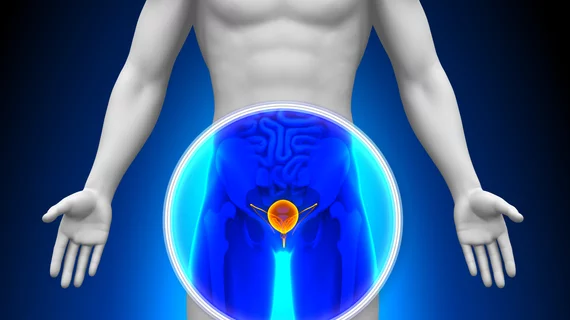PET/MRI may reduce unnecessary prostate biopsies by 83%
New research shows how PET/MRI can not only improve the diagnostic accuracy of prostate cancer, it can help patients avoid unnecessary biopsies. In a study out of China, researchers found PET/MRI could reduce biopsies by 80 percent, at a cost of missing one out of eight clinically significant prostate cancers. The findings are published in The Journal of Nuclear Medicine. [1]
In the study, lead author Jingyan Shi, MD, from Nanjing Drum Tower Hospital, and her team used a scoring system and his team utilized a scoring system to assess PET/MRI results for prostate cancer patients, using a five-point scale (PRIMARY) to rank the necessity of a biopsy. While any lesion score three or more is typically biopsied, the study authors said less than 20 percent of lesions ranked at three are actually clinically significant cancers.
“PI-RADS 3 lesions present a dilemma to both urologists and patients because immediate biopsy could be unnecessary; however, a monitoring strategy could lead to some missed diagnoses of clinically significant prostate cancer,” study co-author Hongqian Guo, MD, a urologist at Nanjing Drum Tower Hospital said in a statement. “Hence, specifically ruling out clinically significant prostate cancer among PI-RADS 3 lesions has significant clinical implications.”
The PRIMARY ranking system is based on 68Ga-PSMA PET/MRI patterns, localization of the lesion, and observations on the intensity of potential cancer to make an assessment on the necessity of biopsy. The study involved 56 men with level three to five lesions who underwent 68Ga-PSMA PET/MRI. After imaging, all patients underwent prostate systematic biopsy and a targeted biopsy to accurately detect whether a lesion is a clinically significant cancer or benign.
Of the entire cohort, clinically significant cancer was detected in eight cases, a rate of 14.3%. None of those with cancer were ranked at the minimum threshold of three. When the criteria were shifted to examine only patients with lesions ranked 4 or 5, the researchers discovered that 83.3% of biopsies could have been avoided, as PET/MRI was sufficient to make the cancer diagnosis.
However, in one of the eight cases of cancer, PET/MRI was insufficient, indicating that imaging may not be enough in 12.5% of patients with prostate lesions. This statistical error only applied to patients with potential cancers ranked at four or five.
The authors said the study shows images from 68Ga-PSMA PET/MRI is sufficient in most cases to diagnose prostate cancer without a biopsy. However, the small sample size means more research is necessary to quantify exactly how much imaging can reduce biopsies before clinical guidelines are changed.
The full study is available at the link below.

